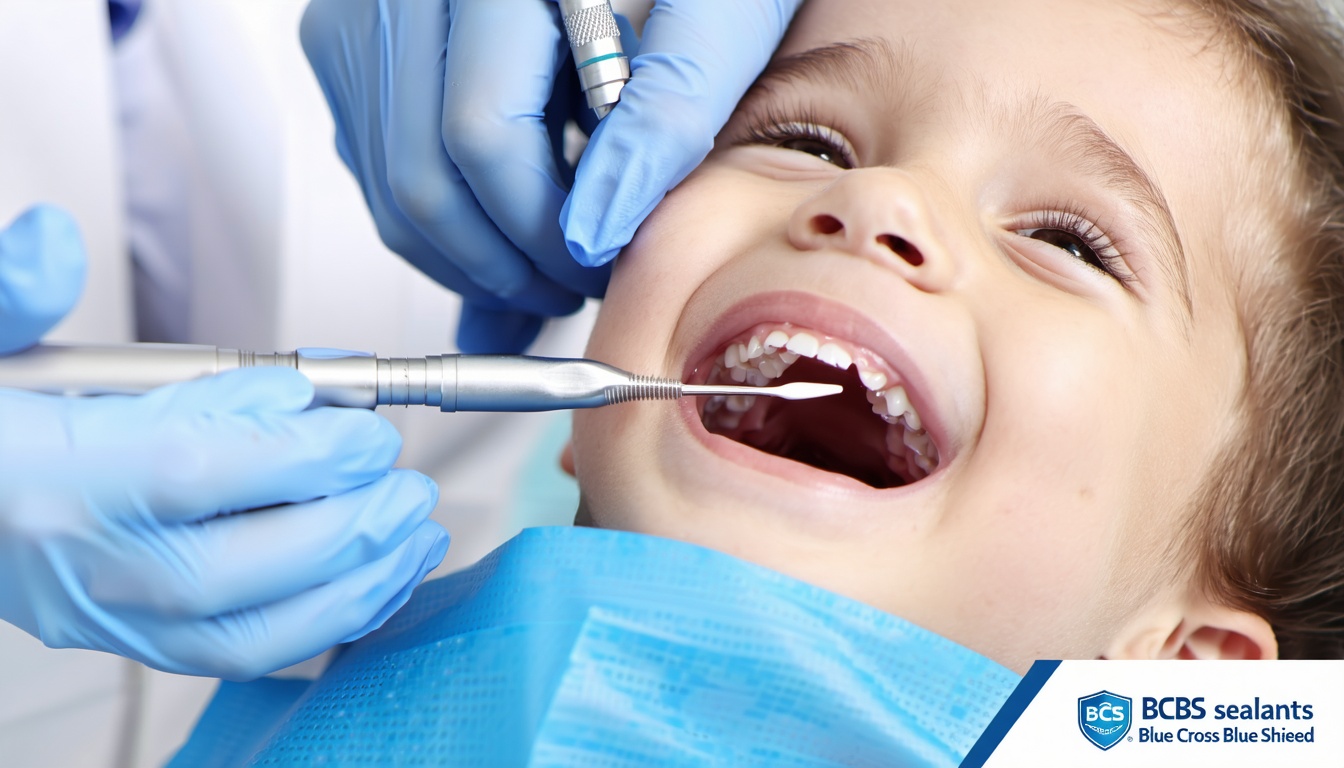Understand sealant benefits
Dental sealants create a thin, protective barrier on the chewing surfaces of your molars and premolars, blocking out food particles and bacteria that cause cavities. When you apply dental sealants with BCBS coverage, you not only reduce your family’s risk of decay but also leverage preventive benefits built into many Blue Cross Blue Shield plans.
What sealants do
- Seal out germs and acids by filling deep grooves and pits in teeth
- Provide a smooth surface that is easier to keep clean
- Require no drilling or injections—application is quick and painless
Proven effectiveness
- Children without sealants on their permanent molars are 22 times more likely to develop cavities than those with sealants (BCBS FEP Dental)
- Properly applied sealants are nearly 100% effective in protecting pits and fissures from decay (BCBS FEP Dental)
- Sealants can prevent up to 80% of cavities for two years and continue to protect against 50% of cavities for up to four years when applied at the right time (CDC)
Cost savings
- Each sealed tooth through school programs saves more than $11 in future dental treatment costs (CDC)
- Applying sealants to 7 million low-income children could prevent over 3 million cavities and save up to $300 million in treatment expenses (CDC)
- Investing $40–$70 per tooth now often avoids more expensive fillings later (Humana)
Explore BCBS coverage
Blue Cross Blue Shield plans vary by type, but many offer strong support for sealants, especially for children. Below is how different BCBS plans typically handle this preventive service.
BCBS PPO plan details
- Coverage level: Often 80–100% of the cost for eligible sealants
- Age limit: Commonly covers children up to age 14 or 18
- Frequency: One sealant application per tooth every 3–5 years
BCBS HMO plan details
- Coverage level: Usually 100% for pediatric sealants, subject to network rules
- Age limit: Varies by state—often up to age 14
- Frequency: One sealant application per tooth per lifetime or per benefit period
BCBS Medicaid benefits
- Coverage level: Medicaid programs generally cover sealants at 100% for eligible children
- Age limit: Ages 6–14 for permanent molars (state dependent)
- Frequency: Typically two applications (first and second molars) without cost share
BCBS Medicare Advantage details
- Coverage level: Medicare Advantage plans rarely include routine sealants for adults
- Eligibility: Limited to medical necessity for certain high-risk dental conditions
- Alternative: You may find adult sealant coverage through supplemental dental riders
- Coverage level: Dependent on employer’s selection—could range from 50–100%
- Age limit and frequency: Aligns with PPO or HMO offerings, check your summary plan description
- Coordination: Review in-network provider lists and preauthorization requirements
Compare plan coverage
Below is a snapshot of how BCBS plan types stack up for sealant coverage. Always confirm details in your plan documents.
| Plan type |
Coverage level |
Age limit |
Frequency |
Deductible applies |
| PPO |
80–100% |
Up to 14–18 |
Every 3–5 years |
Yes, if unmet |
| HMO |
100% in network |
Up to 14 |
Once per lifetime |
No |
| Medicaid |
100% |
6–14 |
Two applications |
No |
| Medicare Advantage |
Rarely covered |
N/A |
N/A |
N/A |
| Employer sponsored |
50–100% |
Plan dependent |
Plan dependent |
Plan dependent |
Check eligibility and costs
Understanding eligibility criteria and potential out-of-pocket expenses helps you plan ahead and avoid surprises.
Age and tooth criteria
- Sealants are most effective on permanent molars and premolars once they erupt
- BCBS FEP classifies sealants on unrestored permanent molars as Class A basic services for members up to age 22 (BCBS FEP Dental)
- Children can benefit as early as age 2 on primary teeth in some cases (Humana)
Replacement frequency
- Sealants last up to five years with proper care but need periodic checks
- Replacement timing may be limited by your plan—refer to the benefit booklet for exact intervals
Out-of-pocket expenses
- Uninsured cost per tooth: $30–$70 (Executive Dentistry)
- With BCBS coverage, your share typically falls to 0–20% depending on plan type
- If you exceed deductibles or fall outside age limits, you may pay full cost
Find in-network providers
Choosing an in-network dentist ensures you get the highest level of coverage without unexpected balance billing.
Use BCBS dentist finder
- Log in to your BCBS member portal and search for general dentists near you
- Filter by preventive services to identify providers experienced in sealant application
- Book an appointment for a sealant consultation and routine checkup (bcbs general dentist near me)
Consider school sealant programs
- Many school-based initiatives partner with BCBS to deliver no-cost sealants to eligible children
- These programs target communities with lower incomes, reducing barriers to preventive care
Verify provider coverage
- Always confirm the dentist accepts your specific BCBS plan before scheduling
- Ask whether they handle claims directly or if you’ll need to submit documentation
Maximize preventive benefits
Getting the most from your BCBS preventive coverage involves smart timing and combining services.
Combine with fluoride treatment
Schedule routine visits
- Plan sealant application around your child’s first and second permanent molar eruptions (ages 6–7 and 11–14)
- Pair with annual checkups to detect early wear or damage
Monitor sealant condition
- Ask your dentist to inspect sealants at every cleaning for cracks or loss
- Prompt repairs can extend protection and prevent costly fillings
By understanding how dental sealants with BCBS coverage work, comparing plan details, and choosing in-network providers, you can protect your family’s oral health while minimizing out-of-pocket costs. For more on basic preventive services, see BCBS dental exam and cleaning coverage and explore our overview of dental sealants covered by insurance. If you have questions, contact your BCBS representative or schedule a consultation with a participating dentist today.



